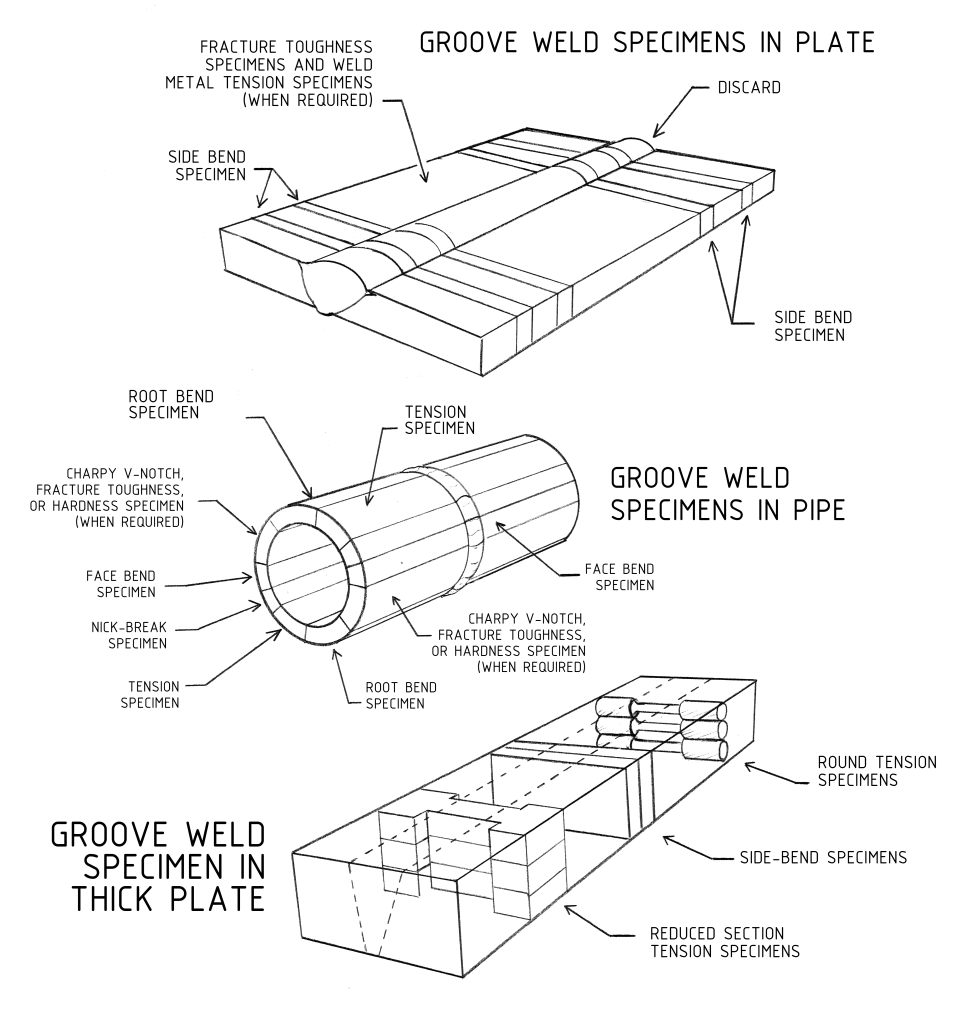30 Destructive Testing
Destructive tests can be categorized as tensile tests (measuring the effects of a pulling force on a material), soundness tests (checking the condition of the weld), hardness tests, and toughness tests. The purpose of a hardness or toughness test is to compare the hardness or toughness of the weld metal in a specimen with the base metal to see if the mechanical properties of the base metal have been altered due to welding.
Destructive test types, the location of specimens, and specimen preparation procedures are indicated in the controlling fabrication code or standard.
When qualifying a welding procedure, maximum load, tensile strength, and failure location data from the test should be recorded on a welding procedure qualification record (WPQR).
Metal fatigue failure is caused by a cyclic or repeated mechanical action on a member.
Specimens
Proper specimen preparation ensures that test results will not be affected by undesirable surface features. Safety practices must be followed when preparing specimens to prevent injury from grinding wheels, hot surfaces, or sharp edges.
Tensile specimens obtained from welded joints are typically rectangular, unless taken from locations where it is not possible to obtain a specimen with a rectangular cross section. Tensile specimens are usually dog-bone shaped so that the central portion of the specimen is narrower in cross section than the two ends.
Mechanical test specimen preparation is described in AWS B4.0, Standard Methods for Mechanical Testing of Welds. Specimen preparation may vary according to the type of weld. Groove weld specimens must be taken from specific locations in plate and pipe welds to ensure accurate results.
 Strain Rates
Strain Rates
The mechanical properties of a metal are strongly affected by the rate of straining. A metal tested at a low strain rate may break with a large amount of strain (elongation), but a metal tested at a high strain rate may break with little or no elongation. Metal is tough and ductile at a low strain rate and is brittle at a high strain rate.
AWS Codes
AWS B4.0, Standard Methods for Mechanical Testing of Welds

